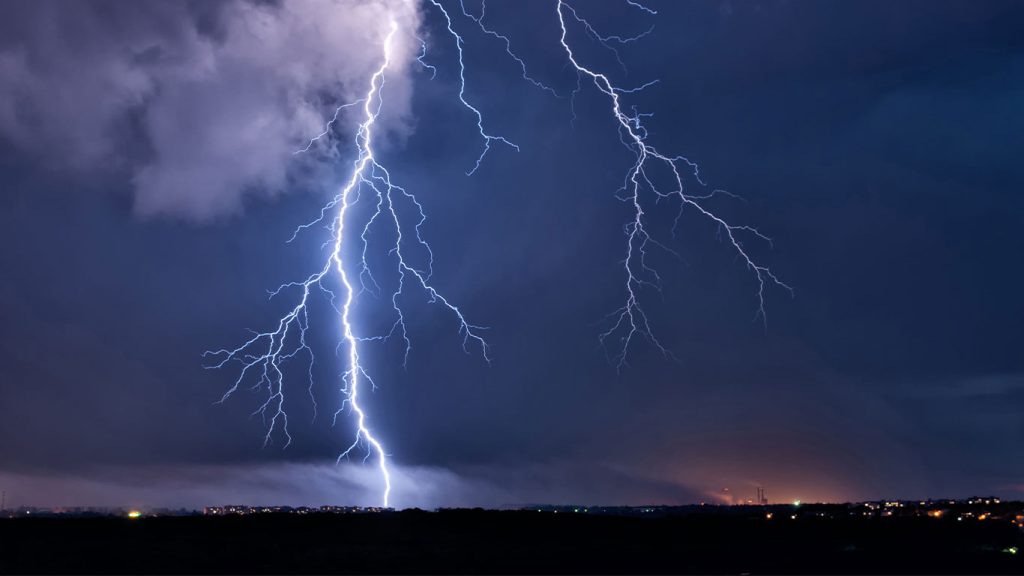The Dallas-Fort Worth metroplex is no stranger to severe weather. From devastating tornadoes to ice storms that bring the region to a standstill, DFW businesses face unique challenges that many other parts of the country simply don’t encounter. Add in severe thunderstorms with damaging winds and hail, and it becomes clear that storm preparedness isn’t just a good idea—it’s essential for business survival.
While most business owners understand the importance of backup power during outages, many don’t realize that protecting their office networks requires much more than simply keeping the lights on. Your business’s digital infrastructure faces distinct vulnerabilities that extend far beyond basic power loss.
The potential risks include:
- Data corruption from sudden power loss
- Expensive equipment damage from power surges
- Security vulnerabilities during recovery
- Extended downtime and lost revenue
For businesses operating on tight margins, any one of these risks could prove catastrophic. This is where partnering with managed IT services like Reese Tech becomes invaluable, providing professional expertise and proactive planning that can mean the difference between weathering the storm and watching your business suffer irreparable harm.
Understanding the Risks
The most immediate threat many business owners think about is the power outage itself, but the real danger often comes when the power returns. Power surge damage is a silent killer of business equipment. When electrical service is restored, the initial surge can be many times stronger than normal operating voltage, instantly destroying sensitive electronic components.
Key surge-related threats include:
- Immediate equipment failure from voltage spikes
- Delayed component failure days or weeks later
- Inadequate protection from basic power strips
- Cascading damage across interconnected systems
Uncontrolled shutdowns present another serious risk. When power is lost suddenly, servers and networking equipment don’t have the opportunity to properly close files, save data, or shut down services properly. This leads to data corruption, damaged databases, and potential hardware failure.
Network security gaps during outages create windows of opportunity for cybercriminals. When systems come back online after an outage, they may not restart properly, leaving critical security services disabled or misconfigured.
Common post-outage security vulnerabilities:
- Firewalls that don’t load rule sets correctly
- Disabled antivirus protection
- Misconfigured user authentication systems
- Unprotected backup systems
Lost productivity and revenue during extended outages can be devastating. Every hour your systems are down, you’re losing money from inability to process orders to employees sitting idle. The longer the outage, the more customers may turn to competitors who remain operational.
Cloud service disruptions add another layer of complexity. Even with active internet connections, networking equipment failures can make cloud services unreachable and prevent remote employees from accessing company resources.
The cost difference between reactive repairs and proactive protection planning is significant. Emergency IT repairs during storms command premium pricing and needed equipment may be unavailable when everyone in the region faces the same problems.
Post-Storm Recovery Best Practices
When storms pass and power returns, the temptation is to rush everything back online quickly. However, this urgency can lead to costly mistakes that create new problems or cause additional damage to equipment that survived the initial outage.
Safe equipment restart procedures are critical during recovery. Different types of equipment need to come online in specific sequences to avoid conflicts and ensure proper network functionality.
Proper restart sequence:
- Start networking equipment first (routers, switches)
- Bring servers online before workstations
- Verify each component before proceeding to the next
- Test connectivity and functionality at each step
- Document any issues discovered during startup
Network security assessments after outages are essential but often overlooked. Systems that appear to work normally may have security vulnerabilities that weren’t present before the outage.

Post-storm security checklist:
- Verify firewall rules loaded correctly
- Check antivirus definitions and protection status
- Test user authentication systems
- Review backup system security
- Run comprehensive vulnerability scans
Data integrity verification requires careful attention. Files that appear intact may have subtle corruption that won’t be apparent until you try to use them. Databases may have inconsistencies that could cause problems weeks later.
Data verification steps:
- Test critical files and databases for corruption
- Verify backup systems are functional and current
- Run database consistency checks
- Test data recovery procedures
- Document any data loss or corruption discovered
Learning from each incident transforms every storm into an opportunity to strengthen preparedness. Post-incident analysis examines what worked well, what could be improved, and what new vulnerabilities were discovered.
Improvement process:
- Document what equipment failed and why
- Identify gaps in current protection measures
- Update emergency procedures based on lessons learned
- Test new protective measures before the next storm season
- Train staff on updated procedures
Knowing when to call professional help can mean the difference between quick recovery and extended outages. Emergency response protocols established before storms ensure help is available when you need it most.
Professional help indicators:
- Equipment showing signs of physical damage
- Data corruption beyond simple file recovery
- Security breaches or suspicious network activity
- Multiple system failures requiring specialized expertise
- Recovery taking longer than planned timelines
Conclusion
Storm-related risks to network infrastructure are real and potentially devastating to businesses that haven’t prepared properly. However, these risks don’t have to become reality with proper planning and professional partnership.
Managed IT services transform storm response from crisis management to systematic recovery. Instead of panicking during post-storm chaos, you have clear procedures, professional support, and confidence that your systems are protected by expertise and proven methods.
Key takeaways:
- Proactive protection costs less than emergency repairs
- Professional partnerships provide expertise most businesses lack
- Systematic recovery procedures prevent costly mistakes
- Regular preparation updates improve protection over time
The time to prepare is before storms arrive, not after they’ve caused damage. Don’t wait for the next tornado warning or ice storm forecast—schedule a storm preparedness assessment before the next severe weather season arrives. Your business, your data, and your peace of mind are worth the investment in proper preparation and professional partnership.

